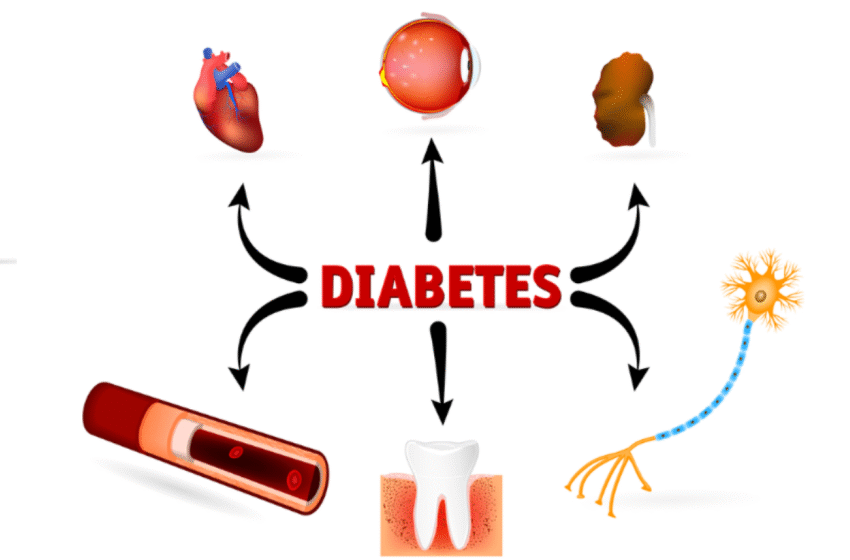Living Fully with Diabetes: A Modern Guide

Diabetes is a word most of us have heard, but it’s a condition that is often misunderstood. It’s not simply about eating too much sugar, and it’s certainly not a sign that someone has failed to take care of their health. Instead, it’s a complex, nuanced medical reality that millions of people navigate every single day. The goal is not just to manage it, but to live a full, vibrant, and healthy life.
This article is a guide to understanding diabetes in today’s world. We will explore the different types, how management has evolved, and the resources available. Think of this as a conversation with a friend who wants to break down the complexities into clear, actionable information.
What Exactly Is Diabetes?
At its core, diabetes is a condition that affects how your body turns food into energy. When you eat, most of the food is broken down into sugar (glucose) and released into your bloodstream. When your blood sugar goes up, it signals your pancreas to release insulin. Insulin acts like a key, allowing the blood sugar into your body’s cells to be used for energy.
If you have diabetes, this system doesn’t work as it should. Either your body doesn’t make enough insulin, or it can’t use the insulin it makes effectively. When there isn’t enough insulin or if the cells stop responding to insulin, too much blood sugar stays in your bloodstream. Over time, this can cause serious health problems.
Understanding the Different Types
It’s crucial to know that diabetes is not one single condition. The main types are Type 1, Type 2, and gestational diabetes, and each has a different cause.
-
Type 1 Diabetes: This is an autoimmune condition. The body’s own immune system mistakenly attacks and destroys the insulin-producing cells in the pancreas. The cause is not fully understood, and it is not related to lifestyle. It’s often diagnosed in children and young adults, but it can appear at any age. People with Type 1 diabetes require insulin every day to survive. The singer Nick Jonas diabetes diagnosis as a teenager helped bring significant public awareness to this type.
-
Type 2 Diabetes: This is the most common form. Here, the body doesn’t use insulin well and can’t keep blood sugar at normal levels. It develops over many years and is often diagnosed in adults, though we are seeing it more in children, teens, and young adults. While family history and genetics play a role, lifestyle factors are significant. The good news is that it can often be managed through healthy eating, physical activity, and sometimes medication.
-
Gestational Diabetes: This type develops in pregnant women who have never had diabetes. It usually goes away after the baby is born but increases the risk for Type 2 diabetes later in life for both the mother and the child. Management is key during pregnancy, often starting with a structured diet, like a carefully crafted 7-day meal plan for gestational diabetes.
The Language of Management: Codes, Supplies, and Community
Managing diabetes involves a partnership between you and your healthcare team. This world has its own language, and understanding it can empower you.
Medical Codes: The ICD-10 System
You might hear terms like diabetes icd 10 or icd 10 diabetes. This refers to the International Classification of Diseases, 10th Revision. It’s a system doctors and insurance companies use to classify and code all diagnoses. For example, icd 10 diabetes type 2 has a specific code (E11), while type 2 diabetes icd 10 is just another way of searching for the same information. The icd 10 code for diabetes type 2 is essential for processing insurance claims and ensuring your care is properly documented. It’s the administrative backbone of your treatment plan.
Modern Diabetes Supplies
Gone are the days of only basic syringes and urine tests. Today’s technology has revolutionized diabetes care. Companies like ADW diabetes and advanced diabetes supply specialize in providing modern tools. These can include continuous glucose monitors (CGMs) that track your levels in real-time without finger pricks, and advanced insulin pumps. These supplies give people unprecedented control and data about their health, moving management from reactive to proactive.
Finding Lightness and Connection
It’s also important to acknowledge the human side. Living with a chronic condition can be challenging. This is where community and humor come in. A quick search for a diabetes meme will reveal a world of people using humor to share their experiences, from the frustrations of a stubborn high blood sugar reading to the joy of finding a delicious, diabetes-friendly recipe. This shared laughter is a powerful tool for reducing stress and feeling less alone.
Taking Control: The Pillars of Management
Whether you are newly diagnosed or have been managing diabetes for years, the foundation remains strong. It’s built on a few key pillars.
-
Nutrition: Food is not the enemy; it’s fuel. The focus is on balanced meals with a mix of non-starchy vegetables, lean proteins, whole grains, and healthy fats. It’s about understanding how different foods affect your blood sugar and creating a sustainable eating pattern you enjoy.
-
Physical Activity: Exercise helps your body use insulin more efficiently. You don’t need to run a marathon. Finding an activity you love—whether it’s walking, dancing, swimming, or yoga—and doing it consistently is what matters most.
-
Monitoring: Checking your blood sugar levels is your direct feedback loop. It tells you how your management plan is working and helps you and your doctor make informed decisions about food, activity, and medication.
-
Medication and Education: This includes any prescribed insulin or other medications. Just as important is education. Understanding the “why” behind your treatment plan is empowering. Ask your doctor questions and seek out reliable information.
A Future of Possibility
A diabetes diagnosis is a beginning, not an end. It’s the start of a more attentive relationship with your health. With the tools, technology, and knowledge available today, people with diabetes are athletes, artists, CEOs, and parents living without limits. The journey is unique for everyone, but the destination is the same: a long, healthy, and active life. By focusing on education, support, and the incredible advancements in care, that future is entirely within reach.


